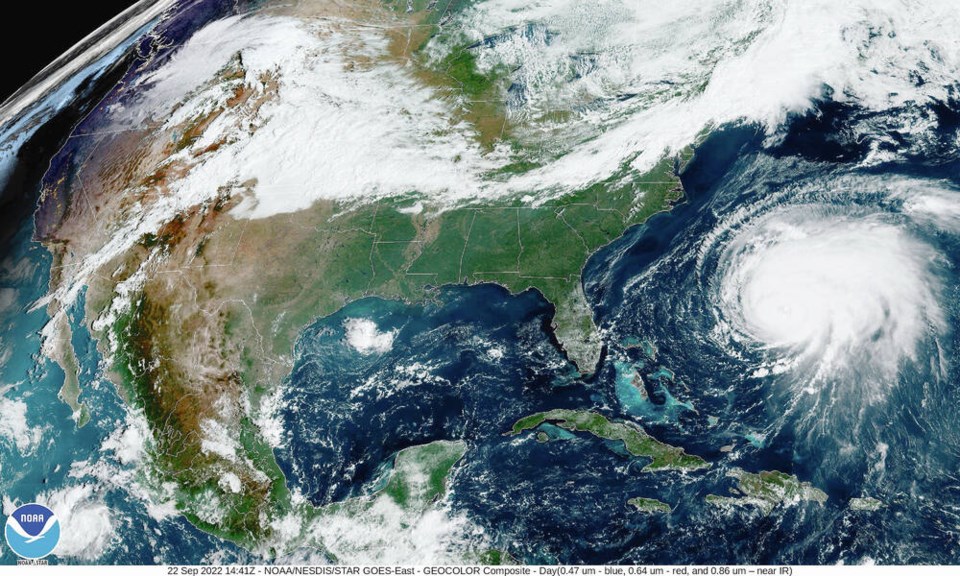The Pacific Ocean’s cold water and wind patterns ensure Canada’s West Coast will not experience the kind of destruction suffered by the Maritime provinces in post-tropical cyclone Fiona, according to weather and climate experts.
The elements that come together to create and sustain hurricanes don’t exist off the West Coast, they say.
“A lot of people like to ask if we are ever going to get hit by tropical cyclones and the answer is no,” said University of Victoria professor David Atkinson, chair and editor of the Journal of Atmospheric and Oceanic Technology.
“And in no scenario of climate change would that ever come to pass.”
Atkinson, whose research focuses on weather and climate in the Arctic and the Pacific basin, said tropical cyclones like Fiona, which travelled the length of the East Coast of the U.S. before devastating parts of Atlantic Canada, require two things the West Coast does not have — warm water and the kind of winds that will carry the storm inland.
“A tropical cyclone needs warm water right underneath it and that water needs to be at least 28 degrees Celsius for it to really form,” he said, noting that’s just what they get in the Caribbean and Gulf of Mexico.
“Where does it go after that? It goes right up the eastern seaboard and it rides those winds.
“And for us, the opposite is true.”
Atkinson said the West Coast gets tropical cyclones that do affect Western Mexico and can travel as far north as southern California.”
“But that’s as far as they’ll ever come, because the basic flow of wind here is from the north to the south. That also creates what’s called upwelling, which means we have really cold water offshore compared to the [Atlantic side] and that absolutely kills tropical cyclones,” he said.
Alyssa Charbonneau, meteorologist with Environment Canada, said anyone wondering why the West Coast doesn’t get destructive hurricanes just has to dip a toe in the water.
“With hurricanes, it’s all about warm water,” she said, noting it’s the driving energy source for these storms. “When hurricanes, tropical storms move over colder water, they rapidly weaken.”
Along the West Coast of Canada, the water temperature rarely rises above the low 20s.
“The East Coast of North America has warm Gulf Stream water and that helps sort of provide that energy to keep hurricanes going,” she said.
The storms that form off the coast of Mexico tend to be in the tradewinds, which blow from the east, she said, and tend to move out into the Pacific rather than trying to come north.
And that’s unlikely to ever change.
Atkinson said the winds steering these storms are “planetary-scale features” and not transient — they’re always there.
“It’s a fundamental feature of the main circulation patterns of the planet,” he said.
Charbonneau noted there have been instances when the West Coast will feel the distant effects of typhoons or tropical storms from the western Pacific. She said they tend to get caught up in the jet stream and some of the energy can hit with winds and heavy rain.
“It does make an impact on our weather, but it’s not at all like the sort of types of storms they see on the East Coast,” she said.
>>> To comment on this article, write a letter to the editor: [email protected]


